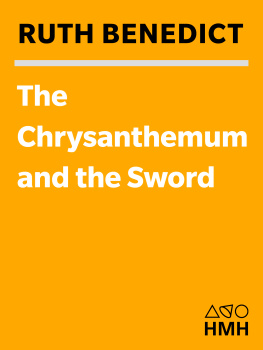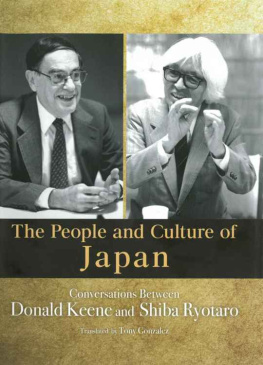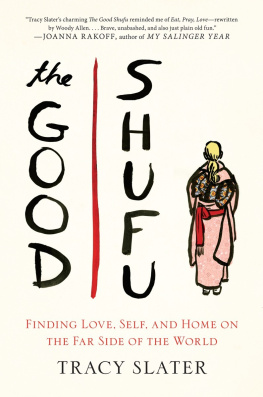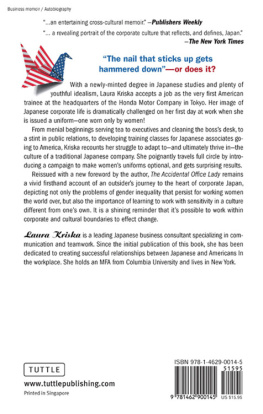Re-reading the Salaryman in Japan
In Japan, the figure of the suited, white-collar office worker or business executive salaryman (or, sarariiman ) came to be associated with Japans economic transformation following World War Two. The ubiquitous salaryman came to signify both Japanese masculinity, and Japanese corporate culture, and in this sense the salaryman embodied the archetypal citizen.
This book uses the figure of the salaryman to explore masculinity in Japan by examining the salaryman as a gendered construct. While there is a considerable body of literature on Japanese corporate culture and a growing acknowledgement of the role of gender, up until now the focus has been almost exclusively on women in the workplace. In contrast, this book is one of the first to focus on the men within Japanese corporate culture through a gendered lens. Not only does this add to the emerging literature on masculinity in Japan, but given the important role Japanese corporate culture has played in Japans emergence as an industrial power, Romit Dasguptas research offers a new way of looking both at Japanese business culture, and more generally at important changes in Japanese society in recent years.
Based on intensive interviews carried out with young male private sector employees in Japan, this book makes an important contribution to the study of masculinity and Japanese corporate culture, in addition to providing an insight into Japanese culture more generally. As such it will be of great interest to students and scholars of Japanese studies, Japanese society and gender studies.
Romit Dasgupta is Assistant Professor of Asian Studies at the University of Western Australia.
Routledge/Asian Studies Association of Australia (ASAA) East Asia series
Edited by Tessa Morris-Suzuki and Morris Low
Editorial Board: Professor Geremie Barm (Australian National University), Professor Colin Mackerras (Griffith University), Professor Vera Mackie (University of Melbourne) and Associate Professor Sonia Ryang (University of Iowa).
This series represents a showcase for the latest cutting-edge research in the field of East Asian studies, from both established scholars and rising academics. It will include studies from every part of the East Asian region (including China, Japan, North and South Korea and Taiwan) as well as comparative studies dealing with more than one country. Topics covered may be contemporary or historical, and relate to any of the humanities or social sciences. The series is an invaluable source of information and challenging perspectives for advanced students and researchers alike.
Routledge is pleased to invite proposals for new books in the series. In the first instance, any interested authors should contact:
Professor Tessa Morris-Suzuki
Division of Pacific and Asian History
Research School of Pacific and Asian Studies
Australian National University
Canberra, ACT0200 Australia
Professor Morris Low
School of Languages and Comparative Cultural Studies
University of Queensland
Brisbane, QLD 4072, Australia
Routledge/Asian Studies Association of Australia (ASAA) East Asia Series
| Gender in Japan
Power and public policy
Vera Mackie |
| The Chaebol and Labour in Korea
The development of management strategy in Hyundai
Seung Ho Kwon and Michael ODonnell |
| Rethinking Identity in Modern Japan
Nationalism as aesthetics
Yumiko Iida |
| The Manchurian Crisis and Japanese Society, 193133
Sandra Wilson |
| Koreas Development Under Park Chung Hee
Rapid industrialization, 19611979
Hyung-A Kim |
| Japan and National Anthropology
A critique
Sonia Ryang |
| Homoerotic Sensibilities in Late Imperial China
Wu Cuncun |
| Postmodern, Feminist and Postcolonial Currents in Contemporary Japanese Culture
A reading of Murakami Haruki, Yoshimoto Banana, Yoshimoto Takaaki and Karatani Kjin
Murakami Fuminobu |
| Japan on Display
Photography and the Emperor
Morris Low |
| Technology and the Culture of Progress in Meiji Japan
David G. Wittner |
| Womens History and Local Community in Postwar Japan
Curtis Anderson Gayle |
| Defending Rights in Contemporary China
Jonathan Benney |
| Re-reading the Salaryman in Japan
Crafting masculinities
Romit Dasgupta |
First published 2013
by Routledge
2 Park Square, Milton Park, Abingdon, Oxon OX14 4RN
Simultaneously published in the USA and Canada
by Routledge
711 Third Avenue, New York, NY 10017
Routledge is an imprint of the Taylor & Francis Group, an informa business
2013 Romit Dasgupta
The right of Romit Dasgupta to be identified as author of this work has been asserted by him in accordance with sections 77 and 78 of the Copyright, Designs and Patents Act 1988.
All rights reserved. No part of this book may be reprinted or reproduced or utilized in any form or by any electronic, mechanical, or other means, now known or hereafter invented, including photocopying and recording, or in any information storage or retrieval system, without permission in writing from the publishers.
Trademark notice : Product or corporate names may be trademarks or registered trademarks, and are used only for identification and explanation without intent to infringe.
British Library Cataloguing in Publication Data
A catalogue record for this book is available from the British Library
Library of Congress Cataloging in Publication Data
Dasgupta, Romit.
Re-reading the salaryman in Japan: crafting masculinities/Romit Dasgupta.
Includes bibliographical references and index.
1. MasculinityJapan. 2. Corporate cultureJapan. 3. MenJapan
Social conditions. 4. MenJapanIdentity. I. Title.
HQ1090.7.J3D37 2012
305.310952dc23 2012006765
ISBN: 978-0-415-68328-9 (hbk)
ISBN: 978-0-203-10208-4 (ebk)
Typeset in Times New Roman
by Wearset Ltd, Boldon, Tyne and Wear
In memory of Professor Kamehata Yoshihiko, without whose support and encouragement this book would not have been possible, but who sadly passed away shortly before its publication.
Acknowledgements
This book is the culmination of a long, stop-start process, which often felt like it was more stop than start! It has taken over six years between the end of the doctoral research that provided the springboard for this book, and its final publication. Along the way, the book has had a rich and varied journey. It was drafted, written, and proof-read in a variety of sometimes quite unusual settings university offices and libraries in Australia, Japan, and Singapore; cafes and hotels in various cities across Australia, Asia, and Europe; and at numerous airports around the world and on far too many long-distance airline flights! Most memorable of all, a little town in the mountains of northern Vietnam will forever remain etched in my mindscape, as that is where I started on what eventually took shape as the conclusion to this book.







